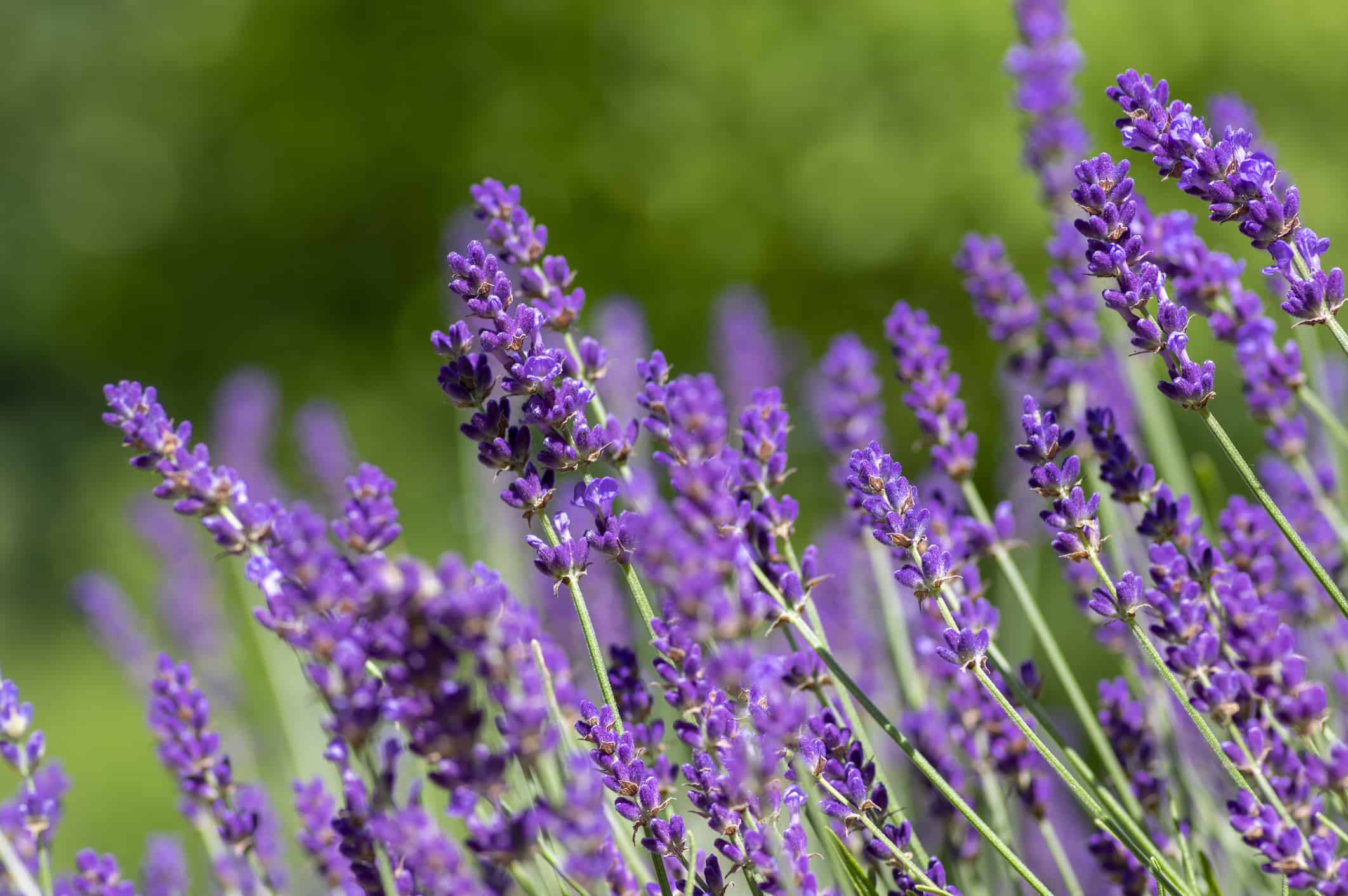Nature lovers flock to Tennessee, a beautiful state brimming with fascinating plants, gorgeous flowers, and dense forests. Tennessee has a diverse biosphere, containing thousands of species of perennial and annual flowers, shrubs, and trees. Since weather patterns can be difficult to predict, many Tennessee residents rely on the Plant Hardiness Zone Map (PHZM) produced by the United States Department of Agriculture. By dividing the state into different growing zones, the PHZM provides guidelines for which plants will survive colder weather in certain geographic areas.
Zones are determined by the average lowest winter temperature in a specific region. States are divided into zones. Zones are created by the area’s average minimum winter temperature. Hardiness zones are subdivided by increments of five degrees. For example, section A of a zone may have a minimum winter temperature of -5 Fahrenheit degrees. Section B could have a minimum winter temperature of -10 Fahrenheit degrees. There are 13 distinct hardiness zones for the United States and its territories.

The USDA Plant Hardiness Zone Map for the State of Tennessee.
Located in the mid-south, Tennessee is a temperate zone with warm summers and mild winter weather. According to the PHZM classification system, Tennessee’s growing zones range from 5b to 8a.
Zone 5b
This is the coldest zone in Tennessee with temperatures in Zone 5b averaging -15 to -10 Fahrenheit degrees. This zone mainly covers high-altitude, mountainous areas. Some perennials do well in this zone, including yarrow (Achillea spp.), varieties of wormwood (Artemisia), and swamp milkweed (Asclepias incarnata), which thrives in wet soil.
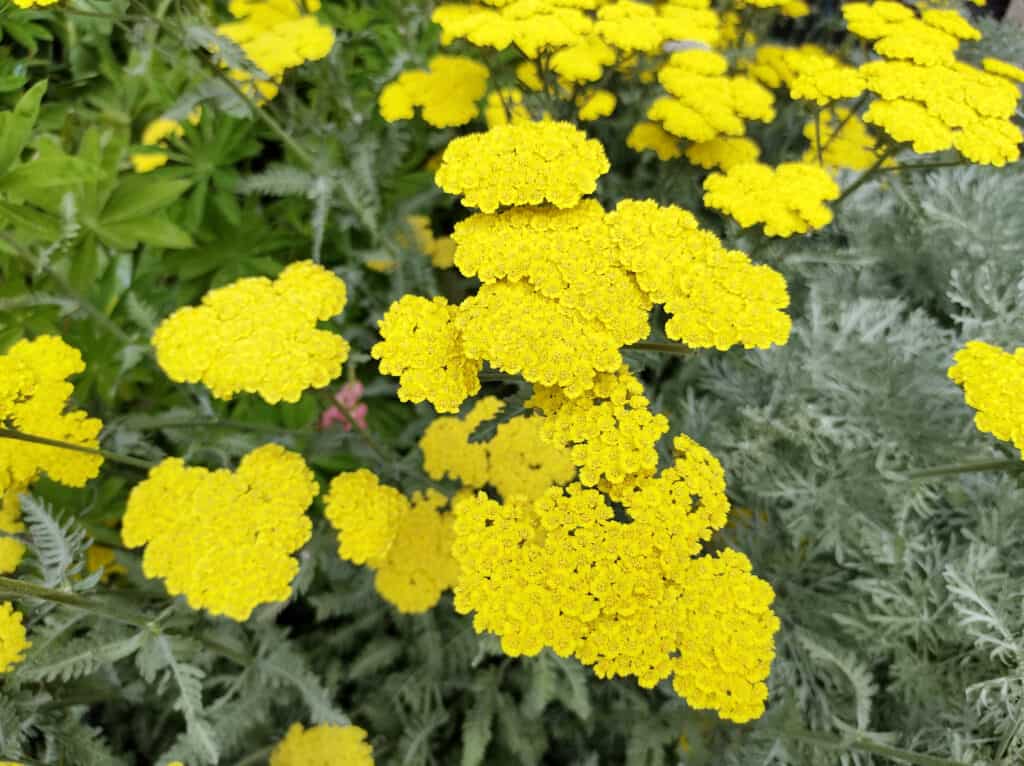
Yarrow grows well in wet soil conditions.
©iStock.com/John Caley
Some like It Cold
Few things are more satisfying than watching your flowers grow from seeds. While seeds typically are placed in the ground sometime in the spring, some Zone 5b plants need to be planted well before their growing season. Some beautiful flowers, like butterfly bush (Buddleia davidii) and black-eyed Susans (Rudbeckia hirta) flourish after undergoing cold stratification. Those seeds need to spend the winter underground, where the soil is wet and the temperatures are chilly. They’ll flower when it begins to warm up! Always check with your source to verify if cold stratification is necessary for your seeds.
Zone 6
In Zone 6a, the temperatures dip down to an average of -10 to -5 Fahrenheit degrees. Averages for Zone 6b range from -5 to 0 Fahrenheit degrees. In Tennessee, Zone 6 extends from the state’s northern border with Kentucky into the Cumberland Plateau. Some areas along Tennessee’s border with North Carolina also fall within that zone.
Throughout Tennessee’s Zone 6, you’ll find a multitude of oak trees (the Quercus genus), weeping willows (Salix babylonica), and American beech trees (Fagus grandifolia). All of these trees can reach heights of at least fifty feet! Observers will see plenty of flowering viburnum shrubs, including Viburnum carlesii ‘Compactum’ with its small white flowers. Pollinators flock to Zone 6 gardens once the bee balm (Monarda spp.) begins to bloom. Daffodils (Narcissus) will flower early in the spring, adding a vibrant dash of color to outdoor spaces, a precursor of more beautiful blooms to come.

Weeping willows are a striking feature of the Tennessee landscape.
©Axel Bueckert/Shutterstock.com
Think Ahead When You Plant Trees
It’s easy to get caught up in purchasing the type of trees you want for your property. Make sure you’re thinking ahead to when the tree gets big! Improper tree placement could shorten the life of the plant, creating room for diseases and root rot to take hold. It could also create dangerous situations for you! If a tree is planted too close to your home, its expanding roots could crack your house’s foundation. It could even fall on your home, endangering your family and pets. Those roots could also work their way into your septic system or sewer lines, causing clogs or structural damage. Safety issues could occur if branches start growing through power lines. Give those saplings enough room to grow!
Zone 7
Tennessee moves out of negative temperature averages in Zone 7, but it can still get downright cold! Winter temperatures range from 0 to five Fahrenheit degrees in Zone 7a, and from five to 10 Fahrenheit degrees in Zone 7b. From Clarksville to Nashville to Knoxville, much of Tennessee is classified within Zone 7.
Of particular fame in Tennessee is the flowering dogwood tree (Cornus florida) which thrives in Zone 7. When the dogwoods bloom, it is a sign of spring. Knoxville residents can enjoy the yearly Dogwood Trails, a self-guided tour through neighborhoods where dogwoods thrive. While knockout roses (or RADrazz) and sunflowers (Helianthus annuus) are constant favorites, don’t overlook the smooth hydrangea (Hydrangea arborescens). Blooms will start popping out near the middle of June with some flowers measuring up to 12 inches across!
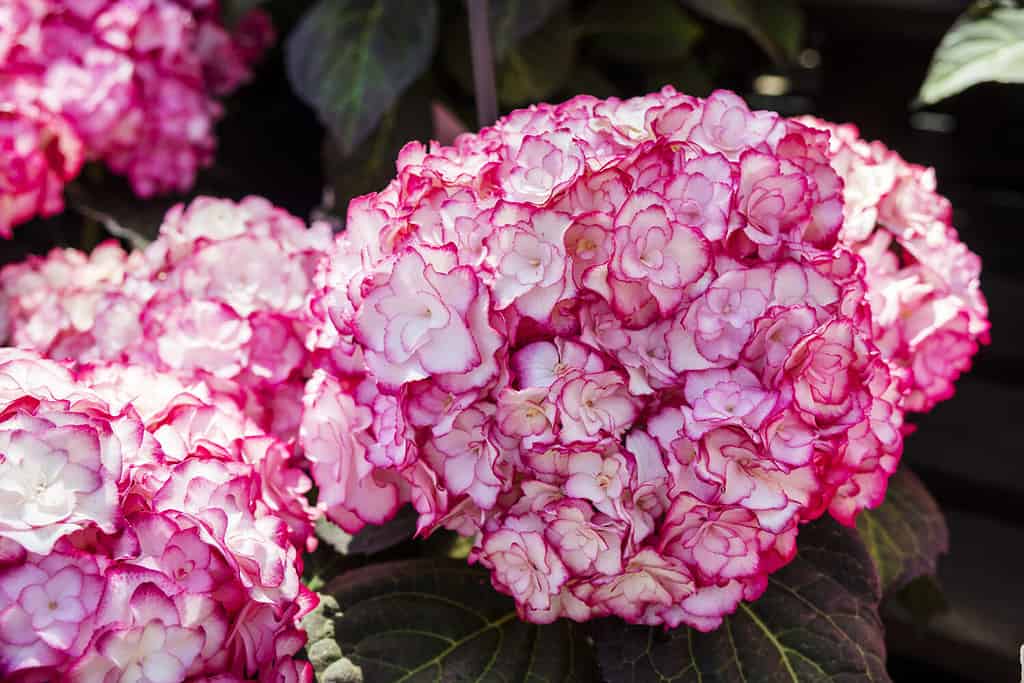
Hydrangeas are a beautiful addition to Tennessee flower gardens.
©Debu55y/Shutterstock.com
Keeping Weeds from Gaining a Chokehold on Your Garden
Nobody likes it when their carefully planned and cultivated garden gets overtaken by pesky weeds or poisonous invaders. Using chemical-based weed killers in your garden can be harmful to your other plants. Spending hours upon hours weeding by hand can be rough on your knees, especially on uneven ground! One way to keep weeds from running rampant is by using a little forethought. Laying the appropriate length of landscaping fabric in your garden before filling it with topsoil will help keep the weeds away. Alternatively, some gardeners use cardboard instead of landscaping fabric. Not only will the soil-covered cardboard prevent weeds and grasses from popping up next to your gorgeous flowers, but it is also biodegradable. If you’ve already put your garden in the ground, consider spreading wood mulch or pine straw around the bases of your plants. Either medium will discourage the growth of unwanted vegetation and help the soil retain moisture.
Zone 8a
Taking up a small portion in the lower part of the state, Zone 8a averages from 10 to 15 Fahrenheit degrees as low winter temperatures. Zone 8a begins close to Tennessee’s southern border, encompassing areas around Memphis and Chattanooga.
Daylilies are deceptively named, for they aren’t in the lily family at all. Of the genus Hemerocallis, daylilies love the warm and humid climate of Zone 8. Many people plant daylilies on hillsides or sloping areas of their properties. Low-maintenance plants like ferns and hostas also do well in this environment. Often associated with Tennessee and other Southern states, the southern magnolia (Magnolia grandiflora) flourishes in Zone 8. With its thick leaves and beautiful perfumed white flowers, the magnolia tree imbues the Tennessee air with its enticing aroma.
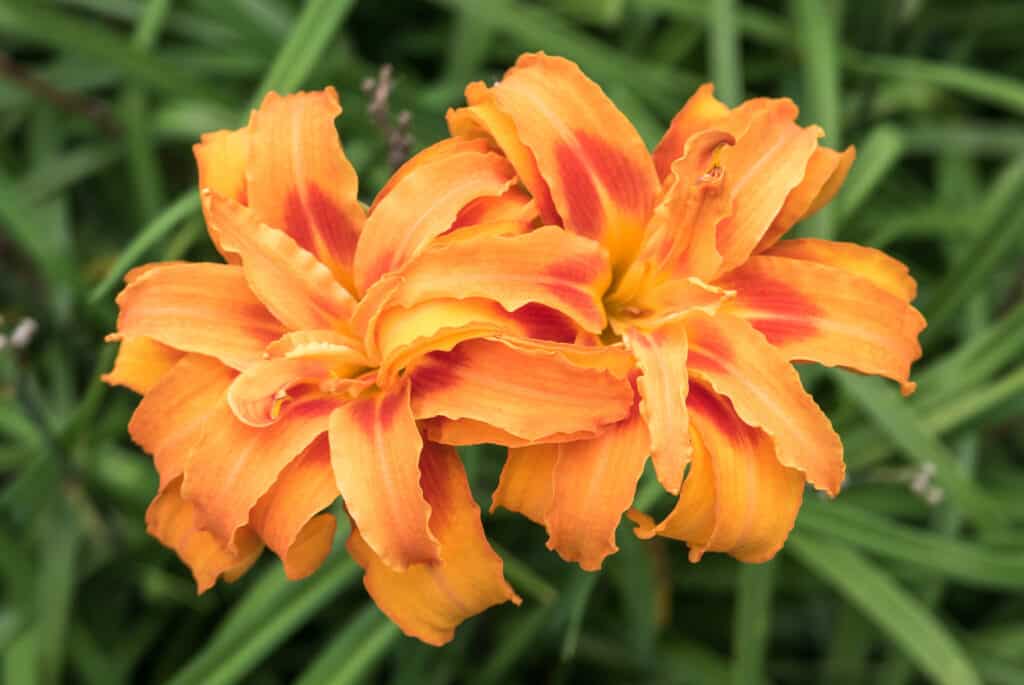
Daylilies can be seen growing along the sides of some Tennessee roads, giving them the nickname “ditch lilies.”
©iStock.com/lrosebrugh
Sun, Shade, or Somewhere in Between?
Where you place your precious plants is just as important as their aesthetic appeal. Heat-loving hostas, a lush addition to most gardens, are susceptible to scorched leaves when placed in full sun. Delicate flowers such as bleeding hearts (Lamprocapnos spectabilis) and Appalachian false goat’s beard (Astilbe biternata) prosper in partially-shaded areas. Flowering plants like lavender (Lavandula angustifolia) and feverfew (Tanacetum parthenium) love the sunshine, as do many fruit trees! Peach, apple, and pear trees do particularly well in Zone 8a sections of Tennessee. Research your plant’s specific needs for light before you start digging holes in your yard.
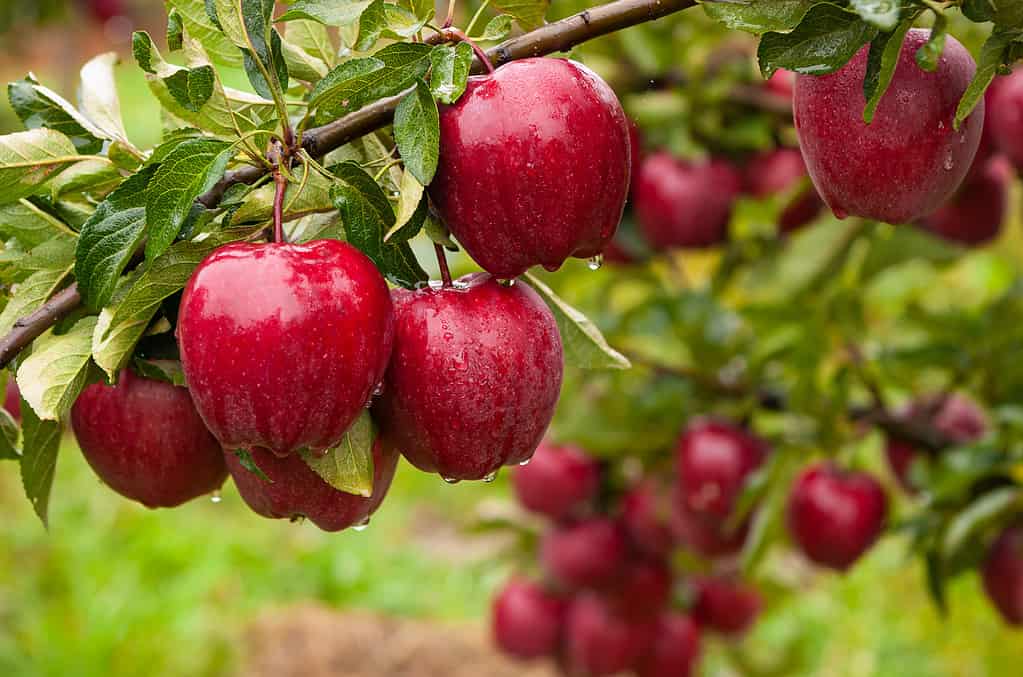
How delightful to pick apples from your own tree!
©Serhii Hrebeniuk/Shutterstock.com
Remember that when choosing plants with the PHZM in Tennessee, plants designated for zones with greater numbers than 8a may not make it through the winter. Beautiful flowers and trees that grow like gangbusters in Southern California, where desert conditions are part of the climate mix, will likely struggle in Tennessee. Do your homework, plan accordingly, and you’ll wind up with a lush, thriving Tennessee garden!
Thank you for reading! Have some feedback for us? Contact the AZ Animals editorial team.

